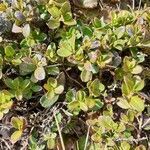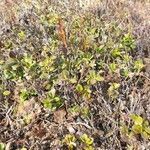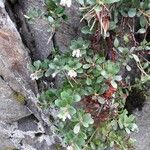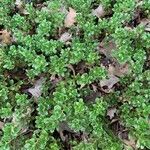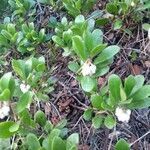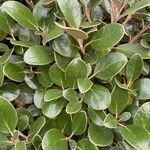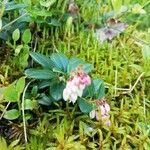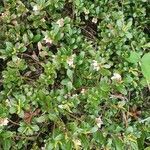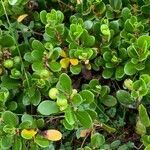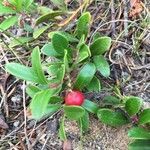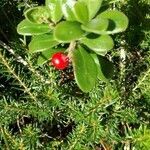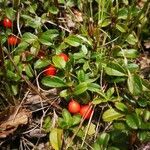Prostrate shrub, forming mats to 1 m wide; lvs leathery, evergreen, oblanceolate to oblong-obovate, 1–3 cm, obtuse or rounded, entire, tapering to the base; sep broadly ovate, 1.5 mm; cor commonly white or tinged with pink, 4–6 mm; fr bright red, dry or mealy, inedible, 6–10 mm, the 5 nutlets partly or usually wholly concrescent. Sandy or rocky soil. May, June. (Uva-ursi uva-ursi) Circumboreal, in N. Amer. from Lab. to Alas., s. to Va., n. Ind., Ill., N.M., and Calif. Variable, especially in pubescence, but not taxonomically divisible, the differences reflecting combinations of genetic and environmental factors.
It is a shrub. It normally lies along the ground. It often cascades over rocks and walls. It forms mats. It grows 10 cm high and spreads 50 cm wide. The leaves are alternate and simple. They are paddle shaped. They are thick and shiny and 12-25 mm long. The leaves are dark green. The leaves turn red in autumn. The flowers are almost round and in small clusters. They droop. They are dull pink. The fruit are green berries. They turn red as they ripen.
